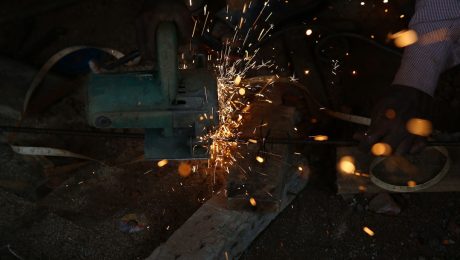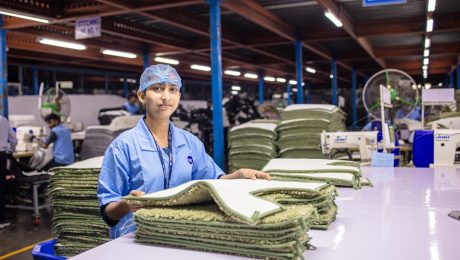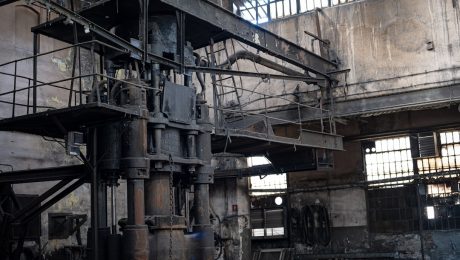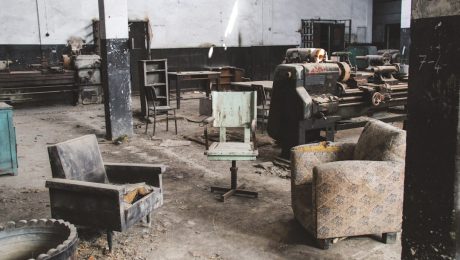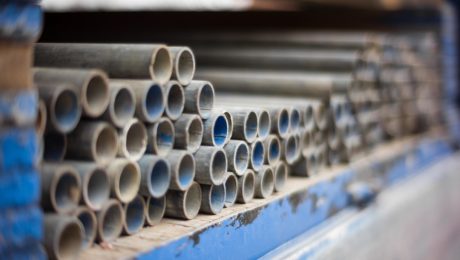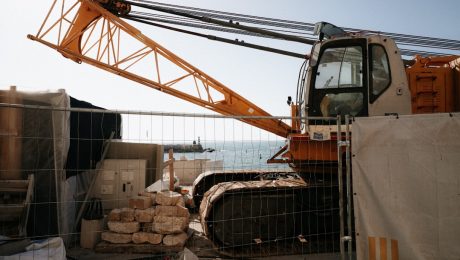Steel is an indispensable component of modern civil engineering projects. From towering skyscrapers to intricate bridge designs, understanding steel’s properties and its application is crucial for any aspiring or practicing civil engineer. This comprehensive guide delves into the essential aspects of steel training, equipping you with the knowledge to confidently tackle steel-related challenges in your career.
Understanding Steel Properties and Grades
Steel’s versatility stems from its diverse range of grades, each possessing unique mechanical properties tailored to specific applications. Civil engineers must possess a strong understanding of these properties, including yield strength, tensile strength, ultimate strength, and elongation. Different grades of steel, designated by standards like ASTM A992 or A36, exhibit varying strengths and ductility, influencing their suitability for different structural elements. Training should encompass not only theoretical knowledge of these properties but also practical experience interpreting material test reports and selecting appropriate steel grades based on design requirements and load conditions. Furthermore, understanding the impact of factors like temperature and corrosion on steel properties is crucial for ensuring long-term structural integrity.
Steel Design Principles and Calculations
Beyond understanding material properties, mastering the design principles governing steel structures is paramount. This involves applying relevant design codes and standards, such as the American Institute of Steel Construction (AISC) manual or Eurocode 3, to calculate member sizes, connection details, and overall structural stability. Training programs should cover various design methods, including limit state design and allowable stress design, allowing engineers to choose the most appropriate approach for each project. Proficiency in using structural analysis software is also essential, enabling engineers to model complex structures, perform load calculations, and assess structural behavior under different loading scenarios. Software such as ETABS, SAP2000, and RISA-3D are commonly used and valuable tools in a civil engineer’s arsenal.
Steel Fabrication and Construction Techniques
A thorough understanding of steel fabrication processes is essential for ensuring the quality and efficiency of construction projects. This involves familiarity with various fabrication techniques, including cutting, welding, bolting, and other joining methods. Training should cover the principles of welding, including different types of welds (e.g., fillet welds, groove welds), weld symbols, and quality control procedures. Furthermore, understanding the importance of proper detailing and fabrication drawings is crucial for minimizing errors and ensuring accurate construction. Exposure to on-site construction practices, including the erection of steel structures, is invaluable for gaining a practical understanding of the challenges and considerations involved in real-world projects.
Quality Control and Assurance in Steel Structures
Maintaining high quality throughout the entire lifecycle of a steel structure is crucial for ensuring safety and longevity. This begins with the selection of high-quality materials and extends through the fabrication, erection, and inspection phases. Training should cover various quality control methods, including material testing, weld inspection (visual and non-destructive testing), and dimensional checks. Understanding relevant codes and standards related to quality control is also essential. Furthermore, engineers should be familiar with procedures for documenting quality control activities and addressing any non-conformances that may arise during the construction process. This aspect ensures that the completed structure meets the required design specifications and safety standards.
Advanced Topics in Steel Design: Connections and Stability
While basic design principles form the foundation, advanced topics like connection design and stability analysis are crucial for tackling complex structural challenges. Connections are critical components that transfer loads between different structural members. Training should cover the design of various connection types, including bolted connections, welded connections, and moment connections. Understanding the behavior of these connections under different loading conditions is essential for ensuring their structural integrity. Furthermore, stability analysis is crucial for assessing the overall stability of steel structures, considering factors such as buckling and lateral-torsional buckling. This often involves advanced computational methods and a deep understanding of structural mechanics.
In conclusion, comprehensive steel training is vital for civil engineers to succeed in designing, constructing, and managing safe and efficient steel structures. This multifaceted training should blend theoretical knowledge with practical experience, ensuring engineers are well-equipped to handle the complexities of modern construction.
Tags: steel training, civil engineering, steel design, steel construction, structural steel
In today’s interconnected world, product traceability in manufacturing is no longer a luxury but a necessity. It’s the ability to track a product’s journey from raw material sourcing to its final destination in the hands of the consumer. This comprehensive guide dives deep into the intricacies of product traceability, exploring its benefits, challenges, and best practices for implementation.
What is Product Traceability in Manufacturing?
Product traceability, in the context of manufacturing, refers to the ability to track and trace a product throughout its entire lifecycle. This involves recording and maintaining detailed information about the product’s origin, processing steps, handling, storage, distribution, and ultimately, its end-use. This detailed record allows manufacturers to identify the precise source of materials, manufacturing processes, and handling procedures associated with any given product. This capability is crucial for numerous reasons, ranging from ensuring product quality and safety to managing recalls and responding to regulatory requirements.
The Benefits of Implementing a Robust Traceability System
Implementing a robust product traceability system offers a multitude of benefits, significantly impacting a company’s bottom line and reputation. These benefits include:
- Enhanced Product Quality and Safety: Traceability allows for the quick identification of faulty batches or contaminated products, preventing widespread issues and protecting consumers.
- Efficient Recall Management: In the event of a product recall, a well-established traceability system enables swift and precise identification of affected products, minimizing losses and damage to brand reputation.
- Improved Supply Chain Visibility: Traceability provides a clear picture of the entire supply chain, highlighting potential bottlenecks, inefficiencies, and areas for improvement.
- Strengthened Compliance and Regulatory Adherence: Many industries are subject to stringent regulations requiring detailed product traceability. A robust system ensures compliance, avoiding penalties and legal issues.
- Enhanced Brand Reputation and Consumer Trust: Demonstrating a commitment to product traceability builds consumer confidence and enhances brand loyalty.
- Reduced Waste and Improved Efficiency: By identifying inefficiencies in the supply chain, traceability contributes to reduced waste and optimized resource utilization.
Challenges in Implementing Product Traceability
While the benefits are clear, implementing a comprehensive traceability system presents several challenges:
- High Initial Investment: Implementing a sophisticated traceability system requires significant upfront investment in hardware, software, and personnel training.
- Data Management Complexity: Managing vast amounts of data generated throughout the supply chain requires robust data management systems and skilled personnel.
- Integration with Existing Systems: Integrating a new traceability system with existing enterprise resource planning (ERP) and other systems can be complex and time-consuming.
- Data Security and Privacy Concerns: Protecting sensitive data related to product traceability is crucial, requiring robust security measures and compliance with relevant data privacy regulations.
- Lack of Standardization: The absence of universally accepted standards for data formats and communication protocols can hinder interoperability and data exchange between different systems.
Technologies Enabling Product Traceability
Several technologies play a crucial role in enabling effective product traceability:
- Barcode and RFID Technology: Barcodes and Radio-Frequency Identification (RFID) tags provide unique identifiers for individual products, enabling easy tracking throughout the supply chain.
- Blockchain Technology: Blockchain offers a secure and transparent platform for recording and sharing product information across the supply chain, enhancing trust and accountability.
- Internet of Things (IoT): IoT sensors and devices embedded in products and throughout the supply chain can provide real-time data on product location, temperature, and other relevant parameters.
- Software Solutions: Specialized software solutions are essential for managing and analyzing the vast amounts of data generated by traceability systems.
- Data Analytics: Data analytics tools can be used to identify trends, patterns, and potential issues in the supply chain, enabling proactive decision-making.
Building a Successful Product Traceability System: A Step-by-Step Guide
Building a successful product traceability system requires a well-defined plan and a phased approach:
- Define Scope and Objectives: Clearly define the scope of your traceability system, identifying the specific products, processes, and data to be tracked.
- Select Appropriate Technologies: Choose the technologies that best suit your needs and budget, considering factors such as scalability, cost, and integration capabilities.
- Develop a Data Management Strategy: Establish a robust data management strategy to ensure data accuracy, security, and accessibility.
- Implement and Integrate Systems: Implement and integrate the chosen technologies and software solutions, ensuring seamless data flow throughout the supply chain.
- Train Personnel: Provide comprehensive training to personnel involved in the traceability system to ensure proper data entry and system usage.
- Monitor and Evaluate Performance: Regularly monitor and evaluate the performance of the traceability system, identifying areas for improvement and making necessary adjustments.
By carefully considering these factors and implementing a well-planned strategy, manufacturers can build a robust product traceability system that enhances efficiency, improves product quality, and strengthens their brand reputation.
Tags: Product Traceability, Manufacturing Traceability, Supply Chain Traceability, Track and Trace, Blockchain Traceability
body { font-family: sans-serif; line-height: 1.6; }
h1, h2, h3 { color: #333; }
h1 { font-size: 2.5em; }
h2 { font-size: 2em; }
h3 { font-size: 1.5em; }
The steel industry is a cornerstone of global infrastructure, but its significant carbon footprint poses a considerable environmental challenge. Producing steel is an energy-intensive process, largely reliant on fossil fuels, contributing substantially to greenhouse gas emissions. However, the industry is undergoing a transformation, driven by environmental concerns and the growing demand for sustainable materials. This post explores innovative strategies for reducing the carbon footprint of steel factories, paving the way for a greener and more sustainable future.
1. Transitioning to Low-Carbon Energy Sources
The most impactful way to reduce steel production’s carbon footprint is by shifting away from fossil fuels towards cleaner energy sources. This involves several key strategies:
- Investing in renewable energy sources: Steel plants can integrate solar, wind, and hydroelectric power into their operations, directly reducing reliance on coal and natural gas. On-site renewable energy generation can significantly lower emissions and improve energy security.
- Utilizing green hydrogen: Hydrogen produced from renewable sources (green hydrogen) holds immense potential for decarbonizing steelmaking. It can replace coke in the blast furnace process, eliminating CO2 emissions from this crucial stage. However, widespread adoption requires advancements in green hydrogen production and storage technologies.
- Carbon capture, utilization, and storage (CCUS): CCUS technologies capture CO2 emissions from the steelmaking process, preventing their release into the atmosphere. This captured CO2 can then be utilized in other industries or stored underground. While promising, CCUS technology is still under development and requires significant investment.
2. Optimizing Production Processes for Efficiency
Beyond energy sources, improving the efficiency of steel production processes is crucial for reducing emissions. This includes:
- Implementing advanced process control: Utilizing advanced sensors, data analytics, and artificial intelligence can optimize energy consumption and reduce waste during steelmaking. Real-time monitoring and adjustments can lead to significant efficiency gains.
- Improving energy efficiency in existing infrastructure: Retrofitting existing steel plants with energy-efficient equipment, such as high-efficiency motors and heat recovery systems, can significantly reduce energy consumption without requiring complete plant overhauls.
- Developing and adopting innovative steelmaking technologies: Research and development are crucial for developing new, more efficient steelmaking processes. Examples include electric arc furnaces (EAFs), which are inherently more energy-efficient than blast furnaces, and direct reduced iron (DRI) processes that use less energy than traditional methods.
3. Utilizing Recycled Steel and Sustainable Raw Materials
Reducing the reliance on virgin iron ore is a key strategy for lowering the carbon footprint of steel production. This involves:
- Increasing the use of scrap steel: Electric arc furnaces (EAFs) primarily use scrap steel as their feedstock, significantly reducing the energy and emissions associated with iron ore production. Expanding scrap steel collection and recycling infrastructure is crucial for maximizing EAF utilization.
- Sourcing sustainably produced iron ore: Focusing on iron ore mines with environmentally responsible practices, such as minimizing waste and reducing water consumption, can reduce the overall environmental impact of steel production.
- Exploring alternative raw materials: Research is ongoing into alternative raw materials for steel production, such as using iron from industrial waste streams. This can reduce reliance on traditional iron ore mining and lower the overall carbon footprint.
4. Implementing Sustainable Supply Chain Management
The environmental impact of steel extends beyond the factory gates. Sustainable supply chain management is essential for minimizing the overall carbon footprint:
- Collaborating with suppliers: Working with suppliers committed to sustainable practices, including responsible sourcing of raw materials and reduced transportation emissions, can significantly reduce the overall environmental impact of steel production.
- Optimizing logistics and transportation: Minimizing transportation distances, utilizing fuel-efficient vehicles, and exploring alternative transportation modes like rail can reduce the carbon emissions associated with transporting raw materials and finished steel products.
- Implementing circular economy principles: Adopting circular economy principles involves designing products for durability, recyclability, and reuse, minimizing waste and extending the lifespan of steel products. This reduces the demand for new steel production.
5. Policy and Regulatory Frameworks for Green Steel
Government policies and regulations play a crucial role in driving the transition to a greener steel industry:
- Carbon pricing mechanisms: Implementing carbon taxes or cap-and-trade systems can incentivize steel companies to reduce their emissions by making pollution more expensive.
- Green subsidies and tax incentives: Government subsidies and tax breaks for investments in renewable energy, green technologies, and sustainable steelmaking practices can accelerate the adoption of cleaner technologies.
- Setting ambitious emission reduction targets: Governments can set stringent emission reduction targets for the steel industry, driving innovation and investment in cleaner technologies. These targets should be aligned with global climate goals.
- Supporting research and development: Government funding for research and development into sustainable steelmaking technologies is essential for driving innovation and accelerating the transition to a greener industry.
The transition to a sustainable steel industry requires a multifaceted approach involving technological innovation, policy support, and collaborative efforts across the entire value chain. By implementing these strategies, the steel industry can significantly reduce its carbon footprint, contributing to a more sustainable and environmentally responsible future.
SEO Tags:
Green Steel, Sustainable Steel Production, Carbon Footprint Reduction, Steel Industry Sustainability, Low-Carbon Steel
body { font-family: sans-serif; line-height: 1.6; }
h1, h2, h3 { color: #333; }
h1 { font-size: 2.5em; }
h2 { font-size: 2em; }
h3 { font-size: 1.5em; }
code { background-color: #f0f0f0; padding: 0.2em 0.4em; border-radius: 3px; }
Steel, a ubiquitous material in modern construction, manufacturing, and infrastructure, undergoes a significant transformation from its raw state to its final, usable form. Understanding the differences between raw and finished steel is crucial for anyone involved in engineering, design, or procurement. This post delves into the key distinctions, exploring their properties, applications, and the processes that bridge the gap between the two.
Understanding Raw Steel: The Foundation
Raw steel, also known as pig iron or crude steel, is the initial product of the iron-making process. It’s far from the refined material we typically associate with steel. Produced in a blast furnace, it contains significant impurities, including carbon (typically 3.5-4.5%), silicon, manganese, phosphorus, and sulfur. These impurities significantly affect its properties, making it brittle, hard to work with, and unsuitable for most applications. Its appearance is typically dark gray or black, with an uneven, rough texture. Raw steel is primarily used as an intermediary product, requiring further processing to become usable finished steel.
The Refining Process: From Raw to Refined
The transformation of raw steel into finished steel involves a series of refining processes aimed at reducing impurities and achieving desired properties. The most common method is the Basic Oxygen Furnace (BOF) process. This involves blowing oxygen into the molten raw steel, oxidizing the impurities and removing them as slag. Other processes include electric arc furnaces (EAFs), which are particularly efficient for recycling scrap steel. These processes carefully control the chemical composition of the steel, adjusting the carbon content and adding alloying elements like chromium, nickel, and molybdenum to achieve specific mechanical properties, such as increased strength, hardness, or corrosion resistance.
Properties: A Tale of Two Steels
The difference in properties between raw and finished steel is dramatic. Raw steel is brittle and lacks the tensile strength and ductility necessary for most engineering applications. Its high carbon content contributes to its hardness but also its brittleness. Finished steel, on the other hand, boasts a wide range of properties depending on its composition and processing. It can be strong, ductile, malleable, and resistant to corrosion, heat, or wear, depending on the specific grade and alloying elements used. This versatility is what makes finished steel so valuable.
Applications: A World of Difference
The contrasting properties directly influence the applications of raw and finished steel. Raw steel, due to its inferior quality, has limited direct applications. It serves primarily as a feedstock for the steelmaking process. Finished steel, however, finds use in a vast array of applications, including:
- Construction: Buildings, bridges, skyscrapers
- Automotive: Car bodies, chassis, engine components
- Manufacturing: Machinery, tools, appliances
- Infrastructure: Railways, pipelines, power transmission lines
- Aerospace: Aircraft components, spacecraft parts
The specific grade of finished steel is carefully selected based on the demands of the application.
Cost and Economic Considerations
The cost of raw steel is generally lower than that of finished steel. This is because raw steel requires less processing and refinement. The additional processing steps involved in transforming raw steel into finished steel significantly increase its cost. The cost of finished steel varies widely depending on the grade, alloying elements, and finishing processes employed. Higher-strength, specialized steels with enhanced properties naturally command higher prices. This cost difference needs to be carefully considered when choosing between different grades of steel for a particular project, balancing cost-effectiveness with performance requirements.
In conclusion, the journey from raw steel to finished steel represents a remarkable transformation, converting a brittle, impure material into a versatile and indispensable engineering material. Understanding this transformation and the differences between the two forms is fundamental to effective material selection and design in various industries.
SEO-Friendly Tags:
- Raw Steel
- Finished Steel
- Steel Properties
- Steel Manufacturing Process
- Steel Applications
The machinery manufacturing industry relies heavily on a consistent and reliable supply of high-quality steel. From the smallest components to the largest frames, steel forms the backbone of countless machines. Securing this supply, however, is a complex process involving sourcing, quality control, cost management, and navigating fluctuating market conditions. This blog post delves into the crucial aspects of steel supply for machinery manufacturers, providing insights to optimize efficiency and profitability.
Sourcing Steel: Navigating the Global Marketplace
Sourcing steel involves more than just finding a supplier. Manufacturers must consider several factors, including:
- Geographic Location: Proximity to manufacturing facilities can significantly reduce transportation costs and lead times. However, accessing specialized steel grades might necessitate sourcing from further afield.
- Steel Grades and Specifications: Different machinery applications require specific steel grades with varying properties like tensile strength, hardness, and corrosion resistance. Manufacturers need to carefully specify their requirements to ensure the right steel is sourced.
- Supplier Reliability and Capacity: Choosing a reliable supplier with sufficient capacity to meet fluctuating demand is crucial. This involves assessing their track record, financial stability, and production capabilities.
- Certifications and Standards: Compliance with industry standards and certifications (e.g., ISO 9001) is vital to ensure consistent quality and traceability throughout the supply chain.
- Pricing and Contract Negotiation: Negotiating favorable pricing and contract terms is essential for cost optimization. Long-term contracts can offer price stability, but flexibility is needed to accommodate market fluctuations.
Quality Control: Ensuring Steel Integrity
Maintaining stringent quality control measures is paramount. Defective steel can lead to costly rework, production delays, and even catastrophic equipment failures. Key aspects of steel quality control include:
- Incoming Inspection: Thorough inspection of incoming steel shipments involves verifying chemical composition, mechanical properties, and dimensional accuracy against specifications.
- Material Traceability: Maintaining a detailed record of the steel’s origin, processing, and handling is crucial for traceability and identifying potential issues.
- Non-Destructive Testing (NDT): Techniques like ultrasonic testing, radiographic testing, and magnetic particle inspection are used to detect internal flaws without damaging the material.
- Statistical Process Control (SPC): SPC helps monitor and control the manufacturing process to minimize variations and ensure consistent quality.
- Supplier Audits: Regular audits of steel suppliers’ facilities and processes help ensure adherence to quality standards and best practices.
Cost Optimization: Managing Steel Expenses
Steel is a significant cost component in machinery manufacturing. Effective cost management strategies are vital for maintaining profitability. These include:
- Strategic Sourcing: Leveraging competitive bidding, long-term contracts, and exploring alternative steel suppliers can help reduce costs.
- Inventory Management: Optimizing inventory levels to avoid excessive stockholding costs while ensuring sufficient supply to meet production demands is crucial.
- Lean Manufacturing Principles: Implementing lean manufacturing principles can minimize waste and improve efficiency throughout the production process, reducing steel consumption and costs.
- Steel Scrap Management: Efficiently managing and recycling steel scrap can significantly reduce material costs.
- Design Optimization: Designing machinery components to minimize steel usage without compromising performance can lead to substantial cost savings.
Technological Advancements: Shaping the Future of Steel Supply
The steel industry is constantly evolving, with technological advancements impacting both steel production and supply chain management. These include:
- Advanced Steel Grades: The development of high-strength, lightweight steels allows for improved machine performance and reduced material costs.
- Additive Manufacturing: 3D printing technologies offer the potential to create complex steel components with minimal material waste.
- Digitalization and Automation: Digital supply chain platforms and automation technologies are improving efficiency, transparency, and traceability throughout the steel supply chain.
- Sustainable Steel Production: Growing emphasis on sustainable practices is driving the adoption of greener steel production methods with reduced environmental impact.
- Predictive Analytics: Utilizing data analytics to forecast steel demand and optimize inventory management can minimize disruptions and improve efficiency.
Building Resilient Supply Chains: Preparing for Future Challenges
The global steel market is subject to various disruptions, including geopolitical instability, economic fluctuations, and natural disasters. Building a resilient supply chain requires proactive measures such as:
- Diversification of Suppliers: Reducing reliance on a single supplier mitigates risks associated with supply disruptions.
- Inventory Buffering: Maintaining sufficient safety stock to withstand unexpected disruptions is crucial.
- Risk Assessment and Mitigation: Regularly assessing potential risks and developing contingency plans is essential for maintaining business continuity.
- Collaboration and Communication: Strong relationships with suppliers and other stakeholders facilitate effective communication and coordination during disruptions.
- Supply Chain Visibility: Real-time tracking and monitoring of steel shipments and inventory levels enhances responsiveness to potential issues.
Successfully navigating the complexities of steel supply is crucial for the success of machinery manufacturers. By implementing the strategies outlined above, manufacturers can ensure a consistent supply of high-quality steel, optimize costs, and build a resilient supply chain capable of weathering future challenges.
Tags: Steel supply chain, machinery manufacturing, steel sourcing, steel quality control, cost optimization, steel industry, supply chain management
The unseen infrastructure beneath our feet – water and gas pipes – plays a vital role in our daily lives. Their reliability and safety are paramount, demanding stringent quality standards throughout their lifecycle, from manufacturing to installation and maintenance. This comprehensive guide delves into the critical aspects of ensuring these pipelines meet the highest standards, preventing leaks, explosions, and ensuring the long-term integrity of our essential services.
Material Matters: Choosing the Right Stuff for Water and Gas Pipes
The choice of material significantly impacts a pipe’s lifespan, durability, and resistance to corrosion. For water pipes, common materials include copper, PVC (polyvinyl chloride), CPVC (chlorinated polyvinyl chloride), polyethylene (PE), and ductile iron. Each offers unique properties: copper is known for its durability and resistance to corrosion, while PVC and CPVC are cost-effective and lightweight. PE pipes are flexible and ideal for complex installations, while ductile iron offers high strength for high-pressure applications. Gas pipes, due to their higher pressure requirements and the flammability of natural gas, typically utilize steel (often with protective coatings), polyethylene (specifically high-density polyethylene or HDPE), and sometimes copper for specific applications. The selection process considers factors such as water chemistry (for water pipes), pressure ratings, soil conditions, and local regulations.
Pressure Testing: Ensuring Pipe Integrity Under Stress
Before a water or gas pipeline goes into service, rigorous pressure testing is crucial to identify any weaknesses or defects. This involves filling the pipe with water (for water pipes) or air (for gas pipes) and pressurizing it to a level significantly exceeding the intended operating pressure. The test duration varies depending on the pipe material, diameter, and intended use. During the test, trained professionals meticulously monitor for leaks, pressure drops, or any other signs of failure. Failure to pass pressure testing indicates flaws that need to be addressed before the pipe can be considered safe for operation. These tests are mandated by building codes and industry standards, ensuring a high degree of safety and reliability.
Regulatory Compliance: Navigating the Labyrinth of Standards
Water and gas pipelines are subject to a complex web of regulations and standards designed to protect public health and safety. These regulations vary by location, but generally cover aspects such as material specifications, installation procedures, testing requirements, and ongoing maintenance. Key organizations involved in setting these standards include the American Society for Testing and Materials (ASTM), the International Organization for Standardization (ISO), and various national and regional regulatory bodies. Compliance with these regulations is not merely a formality; it’s a critical aspect of ensuring the safety and longevity of the pipeline infrastructure. Contractors and installers must be knowledgeable about the relevant regulations and adhere to them strictly.
Joint Integrity: Securing the Connections for a Leak-Free System
The connections between pipe sections are critical points of potential failure. The quality of these joints directly impacts the overall integrity of the pipeline. Various joining methods exist, including solvent welding for PVC and CPVC pipes, threaded connections for steel pipes, fusion welding for polyethylene pipes, and various specialized techniques for other materials. Proper joint preparation, the use of appropriate joining materials, and skilled workmanship are essential to ensure leak-free and durable connections. Improperly joined pipes are a major source of leaks and potential hazards, highlighting the importance of skilled labor and quality control.
Corrosion Control: Protecting Pipes from Degradation
Corrosion is a significant threat to the longevity of water and gas pipes, particularly those made of metallic materials like steel and copper. Various methods are employed to mitigate corrosion, including the application of protective coatings (e.g., zinc galvanization for steel pipes), the use of corrosion-resistant materials (e.g., CPVC for water pipes), and cathodic protection systems for buried pipelines. Regular inspection and maintenance are also crucial for detecting and addressing corrosion before it leads to significant damage or failure. The effectiveness of corrosion control measures directly impacts the lifespan and safety of the pipeline system, emphasizing the need for proactive strategies.
The quality of water and gas pipes is not merely a matter of convenience; it’s a fundamental aspect of public safety and infrastructure reliability. By adhering to stringent quality standards, employing appropriate materials, implementing rigorous testing procedures, and complying with relevant regulations, we can ensure the safe and efficient delivery of these essential resources for generations to come.
SEO-Friendly Tags:
- Water pipe standards
- Gas pipe regulations
- Pipeline quality control
- Pressure testing pipes
- Corrosion control in pipes
Material selection in construction is a critical process that significantly impacts the project’s success. Choosing the right materials ensures structural integrity, durability, cost-effectiveness, sustainability, and aesthetic appeal. This comprehensive guide will delve into the key factors to consider when making these crucial decisions.
1. Structural Performance: The Foundation of a Strong Build
The primary function of any construction material is to provide structural support. This requires careful consideration of the material’s strength, stiffness, and load-bearing capacity. Different materials exhibit varying properties. Steel, for instance, boasts high tensile strength, making it ideal for high-rise buildings and bridges. Concrete, on the other hand, excels in compressive strength and is widely used in foundations and slabs. Timber, a renewable resource, offers good strength-to-weight ratio and is suitable for framing and decking. The selection process must account for anticipated loads, environmental factors (like seismic activity or wind loads), and local building codes. Engineers use sophisticated software and calculations to determine the appropriate material and its dimensions to ensure structural stability and safety.
2. Durability and Longevity: Building for the Long Haul
Beyond initial strength, the long-term performance of materials is paramount. Durability encompasses resistance to weathering, degradation, and damage from various sources. Materials exposed to harsh weather conditions require high resistance to moisture, UV radiation, and temperature fluctuations. For example, choosing durable exterior cladding like fiber cement or brick can significantly reduce maintenance costs and extend the building’s lifespan compared to less durable options. Similarly, the selection of corrosion-resistant materials like stainless steel for exposed elements is crucial in coastal or industrial environments. Understanding the specific environmental challenges of the construction site is key to selecting materials that can withstand the test of time.
3. Cost-Effectiveness: Balancing Quality and Budget
Cost is a crucial factor in any construction project. While initial material costs are important, it’s vital to consider the lifecycle cost, which encompasses initial purchase, installation, maintenance, and eventual replacement. A seemingly cheaper material might require frequent repairs or replacements, ultimately increasing the overall cost. For instance, while cheaper timber might be initially attractive, its shorter lifespan compared to engineered wood products might negate the cost savings in the long run. A thorough cost-benefit analysis, considering both short-term and long-term expenses, is crucial for making informed decisions.
4. Sustainability and Environmental Impact: Building Responsibly
The construction industry is a significant contributor to environmental impact. Sustainable material selection aims to minimize this footprint by prioritizing materials with low embodied carbon, recycled content, and renewable sources. Using recycled steel, reclaimed timber, or locally sourced materials reduces transportation emissions and supports sustainable practices. The embodied energy of a material, which represents the energy consumed in its extraction, processing, and transportation, is another key consideration. Choosing materials with lower embodied energy contributes to a smaller carbon footprint. Furthermore, selecting materials that are easily recyclable or biodegradable at the end of their lifecycle promotes circular economy principles.
5. Aesthetics and Design: Creating Visually Appealing Structures
The aesthetic qualities of materials significantly influence the overall design and visual appeal of a building. The color, texture, and finish of materials contribute to the building’s character and style. For example, the choice between exposed brick, smooth concrete, or timber cladding can drastically alter the building’s aesthetic. Material selection should align with the architectural design and the desired aesthetic outcome. Considering the long-term impact of material choices on the building’s appearance is important, as material degradation or discoloration can negatively impact the overall aesthetics over time. Therefore, selecting materials that maintain their visual appeal over the years is a key consideration.
In conclusion, material selection in construction is a multifaceted process requiring careful consideration of structural performance, durability, cost-effectiveness, sustainability, and aesthetics. By carefully evaluating these factors and leveraging the expertise of engineers and architects, construction projects can achieve optimal results, creating structures that are safe, durable, sustainable, and visually appealing.
Tags: material selection, construction materials, building materials, sustainable construction, cost-effective construction
body {
font-family: sans-serif;
line-height: 1.6;
}
h1, h2, h3 {
color: #333;
}
h1 {
font-size: 2.5em;
}
h2 {
font-size: 2em;
}
h3 {
font-size: 1.5em;
}
The engineering field is constantly evolving, demanding continuous learning and adaptation. Whether you’re a fresh graduate looking to solidify your foundation, an experienced professional seeking specialization, or simply passionate about expanding your knowledge, access to high-quality educational content is crucial. This comprehensive guide explores the diverse resources available to help you reach your full potential.
Mastering the Fundamentals: Online Courses and MOOCs
Massive Open Online Courses (MOOCs) platforms like Coursera, edX, Udacity, and FutureLearn offer a wealth of engineering courses, ranging from introductory levels to advanced specializations. These platforms provide structured learning paths, video lectures, quizzes, assignments, and often peer-reviewed projects. Many courses are free to audit, allowing you to explore the material before committing to a paid certification. Look for courses accredited by reputable universities to ensure quality and potential recognition by employers. Specializations in areas like machine learning, artificial intelligence, sustainable engineering, and data science are particularly in-demand and readily available.
Boosting Your Expertise: Specialized Engineering Certifications
Beyond individual courses, consider pursuing professional certifications to demonstrate your expertise in a specific area. Organizations like the Institute of Electrical and Electronics Engineers (IEEE), the American Society of Mechanical Engineers (ASME), and others offer various certifications that validate your skills and knowledge. These certifications often require passing exams and sometimes involve practical experience. They can significantly enhance your resume and open doors to higher-paying roles and leadership opportunities. Research certifications relevant to your field and career goals to maximize their impact.
Deep Dive into Specifics: Essential Engineering Textbooks and Resources
While online courses and certifications provide structured learning, textbooks and reference books offer a deeper dive into specific engineering principles and concepts. These resources serve as invaluable tools for understanding fundamental theories, mastering complex calculations, and developing a strong theoretical foundation. Explore reputable publishers like McGraw-Hill, Pearson, and Wiley for comprehensive textbooks relevant to your discipline. Additionally, consider utilizing online engineering handbooks and encyclopedias for quick access to formulas, standards, and best practices.
Staying Ahead of the Curve: Industry Blogs, Journals, and Conferences
The engineering landscape is dynamic. To stay relevant and competitive, continuous engagement with industry news, research papers, and professional events is crucial. Subscribe to reputable engineering blogs and journals to stay updated on the latest advancements, trends, and best practices. Attending conferences and workshops allows you to network with peers, learn from industry leaders, and gain insights into emerging technologies. Active participation in these activities keeps your knowledge fresh and showcases your commitment to professional development.
Building Your Network: Online Communities and Forums
Connecting with other engineers is vital for professional growth and learning. Participate in online communities and forums dedicated to your specific engineering discipline. These platforms offer opportunities to ask questions, share knowledge, seek advice, and collaborate on projects. Engaging in discussions and contributing your expertise can significantly enhance your understanding and broaden your perspective. Remember to always maintain professional conduct and contribute positively to the online community.
By strategically utilizing these resources, you can significantly enhance your engineering skills, expand your knowledge, and advance your career. Remember that continuous learning is key to success in this ever-evolving field. Embrace the resources available and invest in your professional development to unlock your full potential.
SEO-Friendly Tags:
- Engineering Education
- Online Engineering Courses
- Engineering Certifications
- Engineering Books
- Professional Development for Engineers
Offering a wide product range can be a double-edged sword. While it presents significant opportunities for growth and market dominance, it also introduces complexities in management, marketing, and logistics. This comprehensive guide explores the multifaceted landscape of a diverse product portfolio, examining its benefits, drawbacks, and strategies for successful implementation.
The Allure of Diversification: Advantages of a Wide Product Range
A broad product range offers several compelling advantages. Firstly, it reduces reliance on a single product. If one product underperforms or faces market fluctuations, others can compensate, ensuring business stability. This diversification mitigates risk and provides a safety net against economic downturns or changing consumer preferences. Secondly, a wide range caters to a larger customer base. By offering a variety of options, you appeal to a broader demographic, increasing market share and potential revenue streams. This is particularly crucial in competitive markets where niche players might struggle to survive.
Thirdly, a diverse portfolio allows for cross-selling and upselling opportunities. Customers purchasing one product might be interested in related items, boosting average order value and customer lifetime value. Finally, a wide product range can establish your company as a market leader, creating a strong brand image and enhancing customer loyalty. The sheer breadth of offerings can solidify your position as a go-to provider in your industry.
Navigating the Complexities: Challenges of Managing a Wide Product Range
While the benefits are undeniable, managing a vast product portfolio presents significant challenges. Inventory management becomes exponentially more complex. Tracking stock levels, managing warehousing, and preventing obsolescence require sophisticated systems and meticulous planning. This often translates to higher storage costs and increased risk of waste due to unsold inventory. Furthermore, marketing and promotion become more demanding. Reaching target audiences for diverse products requires tailored strategies, potentially increasing marketing expenses.
Pricing strategies also need careful consideration. Balancing profitability across various product lines while maintaining competitive pricing can be a delicate balancing act. Additionally, supply chain management becomes more intricate. Managing relationships with multiple suppliers, ensuring timely delivery, and maintaining quality across different product lines requires robust logistical capabilities. Finally, the sheer complexity of operations increases. Managing different product lifecycles, handling customer inquiries, and resolving issues across a wide range of products necessitates efficient organizational structures and streamlined processes.
Strategic Product Portfolio Management: Optimizing Your Range
Effective management of a wide product range is crucial for success. This involves a strategic approach to product selection, development, and lifecycle management. Careful market research is essential to identify gaps in the market and understand customer needs. This helps determine which products to offer and how to position them effectively. Product lifecycle management (PLM) software can be invaluable in tracking product performance, identifying trends, and making informed decisions about product development and discontinuation.
Efficient inventory management systems, including demand forecasting and just-in-time inventory strategies, are critical to minimizing storage costs and preventing obsolescence. Streamlining operational processes, automating tasks where possible, and leveraging technology can improve efficiency and reduce operational costs. Finally, regular performance analysis and adjustments are crucial. Monitoring sales data, customer feedback, and market trends allows for informed decisions about product adjustments, pricing strategies, and marketing campaigns.
Effective Marketing Strategies for a Wide Product Range
Marketing a wide product range requires a multifaceted approach. Segmentation and targeting are paramount. Dividing your customer base into distinct segments based on demographics, preferences, and purchasing behavior allows for targeted marketing campaigns that resonate with specific groups. Multi-channel marketing, leveraging various platforms like social media, email marketing, and content marketing, enables you to reach a wider audience and tailor your message to different channels.
Product categorization and organization on your website and in marketing materials is crucial for easy navigation and customer understanding. Clear product descriptions, high-quality images, and customer reviews enhance the online shopping experience. Personalized marketing, using data to tailor recommendations and offers, improves customer engagement and increases sales. Finally, consistent brand messaging across all products and channels maintains brand identity and strengthens customer recognition.
Scaling Your Success: Growth Strategies for a Diverse Product Portfolio
Expanding your product range strategically is key to sustained growth. This involves careful consideration of market trends, competitive analysis, and customer feedback. Product line extensions, introducing new variations or sizes of existing products, can broaden your appeal and increase sales volume. New product development, based on market research and innovation, can create new revenue streams and strengthen your market position. Strategic partnerships and acquisitions can provide access to new markets, technologies, and product lines, accelerating growth and diversification.
Investing in technology and automation can enhance efficiency, reduce costs, and support rapid growth. Data analytics play a vital role in understanding customer behavior, identifying growth opportunities, and optimizing marketing and operations. Finally, a strong focus on customer relationship management (CRM) strengthens customer loyalty, encourages repeat purchases, and provides valuable feedback for future product development.
Managing a wide product range presents both significant opportunities and considerable challenges. By adopting a strategic approach to product management, marketing, and operations, businesses can leverage the advantages of diversification while mitigating the risks. Careful planning, efficient systems, and a customer-centric approach are essential for navigating the maze and achieving sustainable growth.
The steel industry, long associated with high energy consumption and carbon emissions, is undergoing a significant transformation. Driven by environmental concerns and increasing regulatory pressure, manufacturers are embracing innovative technologies and processes to create energy-efficient steel products. This shift towards sustainability not only benefits the planet but also offers economic advantages and enhances the industry’s reputation.
1. The Energy Footprint of Traditional Steelmaking: Understanding the Challenge
Traditional steelmaking is an energy-intensive process. The primary method, the basic oxygen furnace (BOF) process, relies heavily on coke (a form of coal) as a fuel and reductant. This process generates significant carbon dioxide emissions, a major contributor to climate change. Furthermore, the high temperatures required for steel production consume vast amounts of energy, often derived from fossil fuels. The entire process, from raw material extraction to finished product, leaves a considerable environmental footprint. Understanding this challenge is crucial to appreciating the advancements made in energy-efficient steel production.
2. Innovative Steelmaking Technologies: Reducing Energy Consumption
The quest for energy-efficient steel production has spurred the development of several innovative technologies. These include:
- Electric Arc Furnaces (EAFs): EAFs utilize electricity to melt scrap steel, significantly reducing reliance on coke and associated emissions. They are particularly effective when using a high proportion of recycled steel, further minimizing the environmental impact. The efficiency of EAFs is constantly improving, with advancements in power supply and furnace design leading to lower energy consumption.
- Hydrogen-Based Steelmaking: This emerging technology replaces coke with hydrogen as a reductant in the steelmaking process. Hydrogen, when produced from renewable sources, offers a carbon-neutral alternative, paving the way for truly green steel production. While still in its developmental stages, hydrogen-based steelmaking holds immense potential for decarbonizing the industry.
- Optimized Process Control: Advanced process control systems utilize data analytics and machine learning to optimize energy consumption throughout the steelmaking process. By fine-tuning parameters such as temperature, oxygen flow, and alloy additions, these systems can minimize energy waste and improve overall efficiency.
3. The Rise of Recycled Steel: A Sustainable Solution
The use of recycled steel is a cornerstone of energy-efficient steel production. Scrap steel requires significantly less energy to process compared to producing steel from iron ore. Recycling steel reduces the need for mining, transportation, and processing of raw materials, resulting in lower energy consumption, reduced emissions, and a smaller environmental footprint. The increasing availability of scrap steel and advancements in recycling technologies are driving the growth of this sustainable approach.
4. Energy-Efficient Steel Products: Design and Application
The focus on energy efficiency extends beyond the production process to the design and application of steel products. Lightweight steel designs, for instance, reduce the overall weight of vehicles, buildings, and other structures, leading to lower fuel consumption in transportation and reduced energy demand for heating and cooling in buildings. Furthermore, the use of high-strength steel allows for the construction of lighter and more durable structures, further enhancing energy efficiency.
Innovative coatings and surface treatments can also improve the durability and lifespan of steel products, reducing the need for frequent replacements and associated energy consumption. These advancements highlight the holistic approach to energy efficiency, encompassing the entire lifecycle of steel products.
5. The Economic Benefits of Sustainable Steel: A Win-Win Situation
Embracing energy-efficient steel production is not just an environmental imperative; it also offers significant economic benefits. Reduced energy consumption translates to lower operating costs for steel manufacturers. The growing demand for sustainable materials provides a competitive advantage, attracting environmentally conscious customers. Furthermore, government incentives and carbon pricing mechanisms are increasingly rewarding companies that adopt sustainable practices. This creates a win-win situation, where environmental responsibility and economic profitability converge.
The transition to energy-efficient steel is an ongoing process, but the progress made so far is remarkable. By combining innovative technologies, sustainable practices, and a commitment to continuous improvement, the steel industry is paving the way for a greener future.
Tags: Energy-efficient steel, sustainable steel, green steel, recycled steel, steel recycling, electric arc furnace, hydrogen steelmaking

